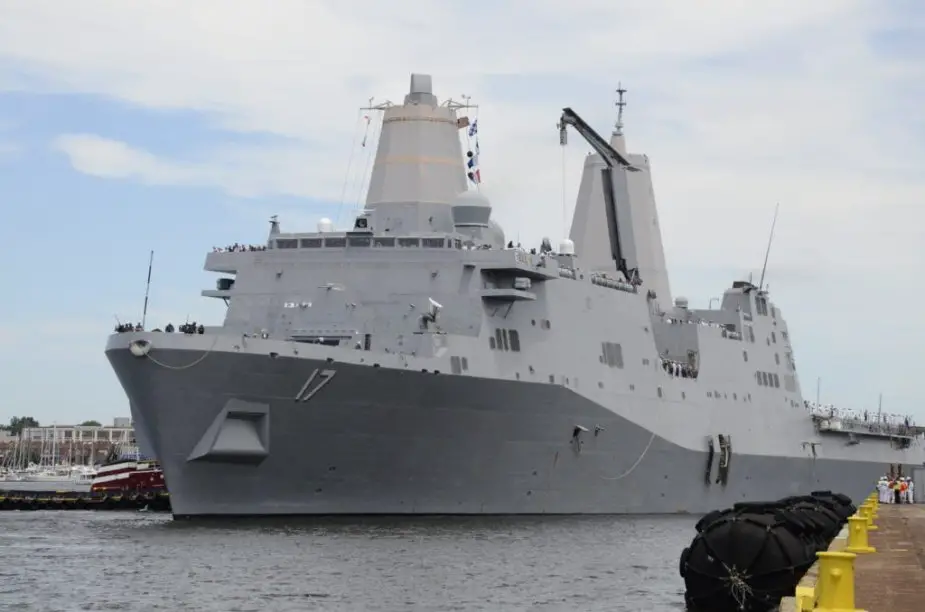According to a press release published by Huntington Ingalls Industries, the firm announced today that its Ingalls Shipbuilding division has been awarded a cost-plus-fixed-fee contract for life-cycle engineering and support services on the U.S. Navy's San Antonio (LPD 17) class of amphibious transport docks. This follow-on contract consists of a base contract valued at $36.9 million with a cumulative value of $213.9 million if all options are exercised.
According to a press release published by Huntington Ingalls Industries, the firm announced today that its Ingalls Shipbuilding division has been awarded a cost-plus-fixed-fee contract for life-cycle engineering and support services on the U.S. Navy's San Antonio (LPD 17) class of amphibious transport docks. This follow-on contract consists of a base contract valued at $36.9 million with a cumulative value of $213.9 million if all options are exercised.
Follow Navy Recognition on Google News at this link
 USS San Antonio LPD-17 the lead ship of her class of amphibious transport dock (Picture source: Sea Power)
USS San Antonio LPD-17 the lead ship of her class of amphibious transport dock (Picture source: Sea Power)
Services provided in this contract include engineering change management; systems engineering and integration; supply chain management; training for new LPD 17-class shipboard systems; and the execution of industrial post-delivery availabilities.
“We appreciate the Navy’s continued investment in our experienced team and their reliance on the support we provide,” said David King, Ingalls' LPD 17 life-cycle program manager. “This contract builds on our strong partnership with the Navy in the construction and post-delivery management of Navy ships. We look forward to supporting these ships as they evolve to meet the changing threat environment.”
The LPD 17 San Antonio Class Amphibious Transport Dock Ship embarks and transports expeditionary landing forces for a variety of U.S. combat missions. It also lands marines, equipment and supplies with the assistance of LCACs; conventional landing craft and Expeditionary Fighting Vehicles (EFV); or Amphibious Assault Vehicles (AAV); and helicopters. The lead ship, USS Arleigh Burke was the first U.S. Navy ship designed to incorporate shaping techniques to reduce the ship's radar cross-section to lower its detectability and likelihood of being targeted by enemy weapons and sensors.
The LPD 17 is powered by four Fairbanks Morse 16-cylinder Colt-Pielstick PC2.5 STC two shaft diesel engines with 10,395 shp each.
The LPD 17 design includes systems configurations that reduce operating and support costs, and other operational performance improvements. System engineering and integration efforts have developed further reductions in life-cycle costs and integrated performance upgrades in a rapid and affordable manner.
San Antonio-class ships are 684 feet long and 105 feet wide and displace approximately 25,000 tons. Their principal mission is to deploy the combat and support elements of Marine expeditionary units and brigades. The ships can carry up to 800 troops and have the capability of transporting and debarking landing craft air cushion or conventional landing crafts, augmented by helicopters or vertical take-off and landing aircraft such as the MV-22. These ships will support amphibious assault, special operations or expeditionary warfare missions through the first half of the 21st century.







